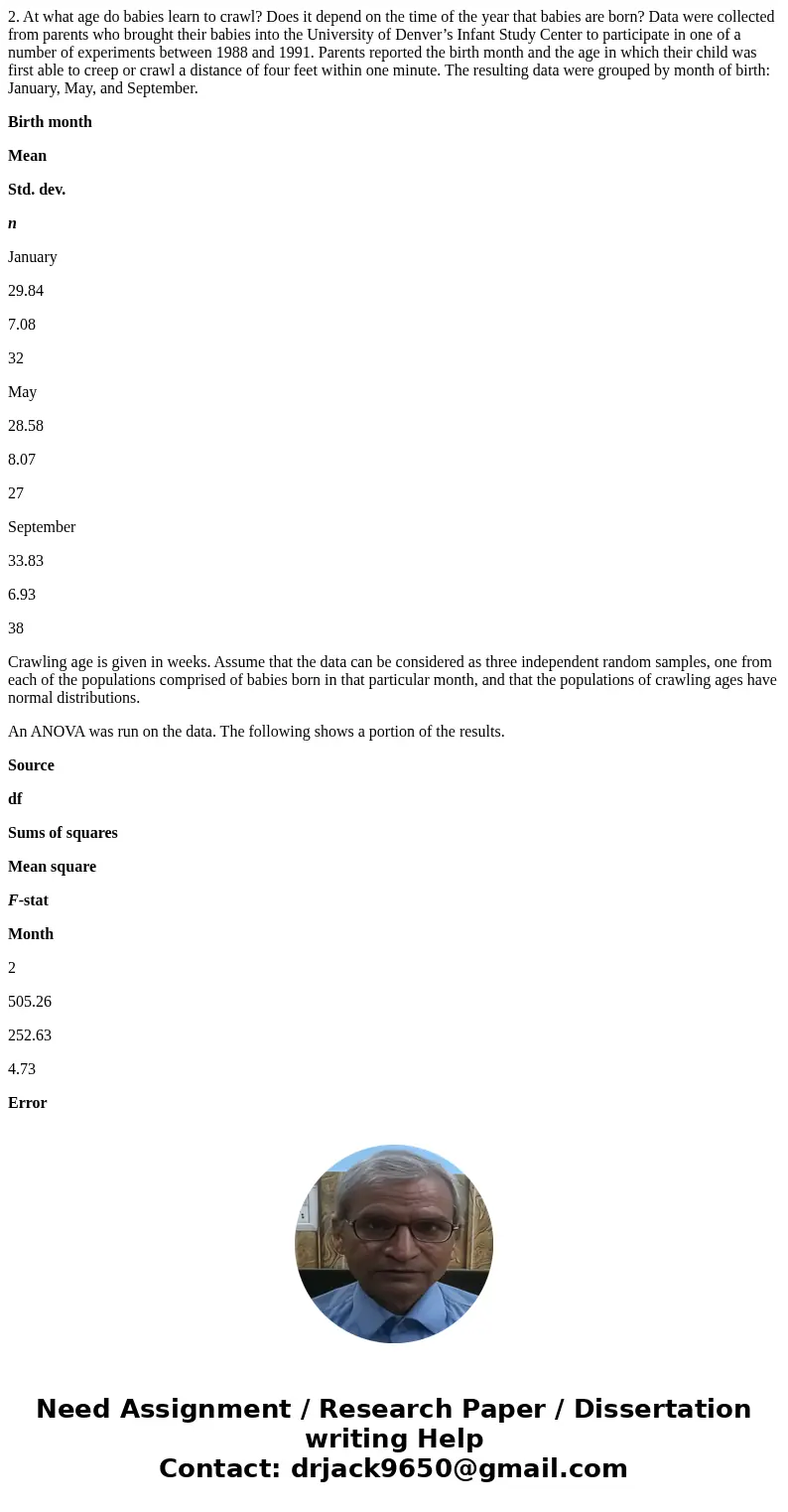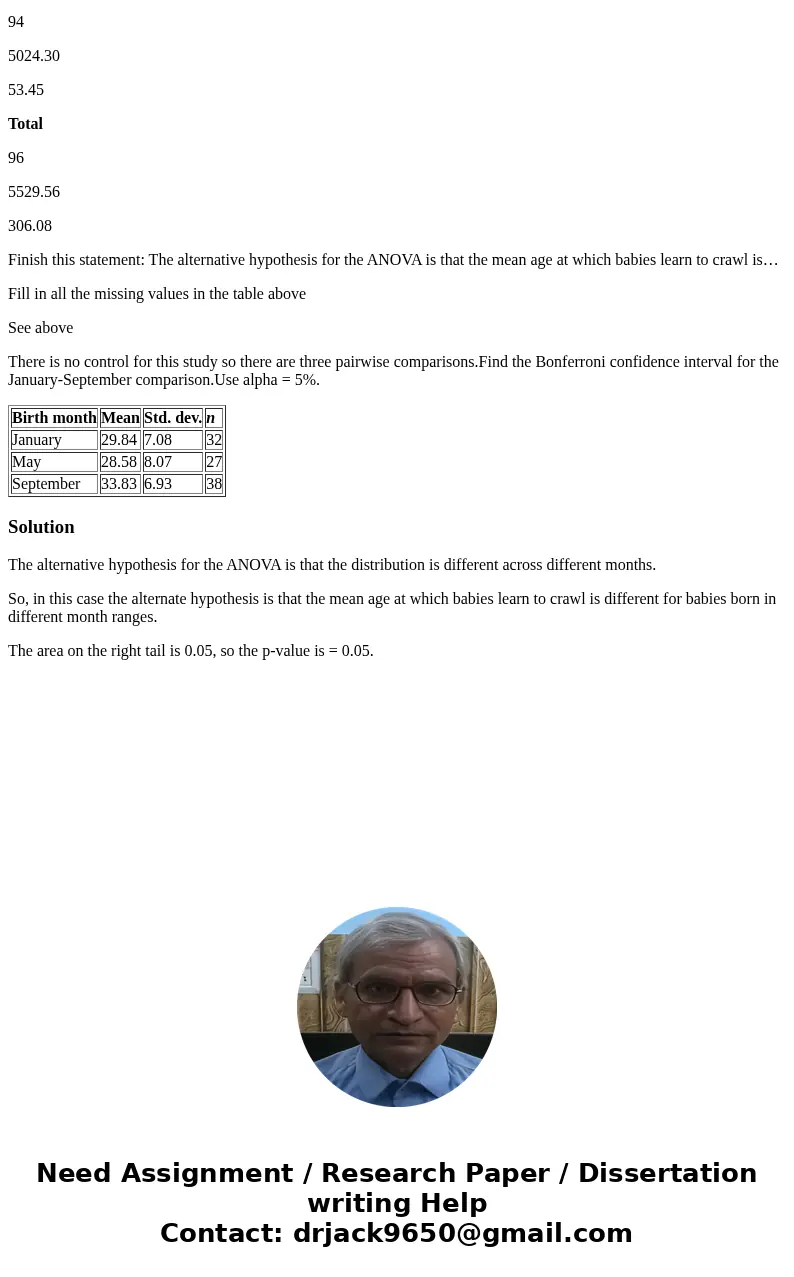2 At what age do babies learn to crawl Does it depend on the
2. At what age do babies learn to crawl? Does it depend on the time of the year that babies are born? Data were collected from parents who brought their babies into the University of Denver’s Infant Study Center to participate in one of a number of experiments between 1988 and 1991. Parents reported the birth month and the age in which their child was first able to creep or crawl a distance of four feet within one minute. The resulting data were grouped by month of birth: January, May, and September.
Birth month
Mean
Std. dev.
n
January
29.84
7.08
32
May
28.58
8.07
27
September
33.83
6.93
38
Crawling age is given in weeks. Assume that the data can be considered as three independent random samples, one from each of the populations comprised of babies born in that particular month, and that the populations of crawling ages have normal distributions.
An ANOVA was run on the data. The following shows a portion of the results.
Source
df
Sums of squares
Mean square
F-stat
Month
2
505.26
252.63
4.73
Error
94
5024.30
53.45
Total
96
5529.56
306.08
Finish this statement: The alternative hypothesis for the ANOVA is that the mean age at which babies learn to crawl is…
Fill in all the missing values in the table above
See above
There is no control for this study so there are three pairwise comparisons.Find the Bonferroni confidence interval for the January-September comparison.Use alpha = 5%.
| Birth month | Mean | Std. dev. | n |
| January | 29.84 | 7.08 | 32 |
| May | 28.58 | 8.07 | 27 |
| September | 33.83 | 6.93 | 38 |
Solution
The alternative hypothesis for the ANOVA is that the distribution is different across different months.
So, in this case the alternate hypothesis is that the mean age at which babies learn to crawl is different for babies born in different month ranges.
The area on the right tail is 0.05, so the p-value is = 0.05.


 Homework Sourse
Homework Sourse